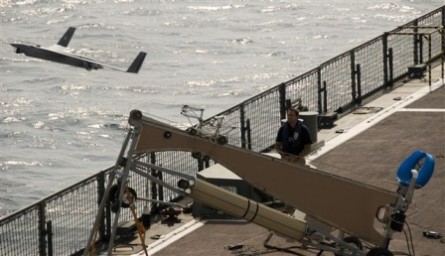Singapore's navy has conducted a ship-based trial of the Boeing ScanEagle, successfully launching and recovering the unmanned air vehicle from a landing ship tank vessel and a frigate.
A Boeing Insitu team helped to conduct the trial in the first week of March with a complete maritime ScanEagle system, including a ground control station, communication links, launcher and SkyHook recovery system.
The trial supported the navy's aim to acquire an ability to perform maritime patrol, reconnaissance and airborne early warning missions using UAVs. Singapore's military has a wider plan to increase unmanned capabilities across all its services.
|
|---|
Last week a Boeing ScanEagle was catapulted from the deck of a Singapore naval vessel |
The ScanEagle has the potential to be an asset for the Republic of Singapore Navy's organic ship-based UAV capability, says Boeing. "The ScanEagle adds another dimension to persistent situational awareness for the ship's crew and generates actionable intelligence, surveillance and reconnaissance information," says Andrew Duggan, ScanEagle programme manager for Boeing Defence Australia.
Boeing says the ScanEagle has operated from a variety of maritime platforms, including a UK Royal Navy Type 23 frigate, US Navy ships and commercial vessels, achieving 1,500 launches and recoveries since 2005. The UAV has also logged over 16,000 flight hours supporting Australian land forces overseas.
Source: Flight International

















